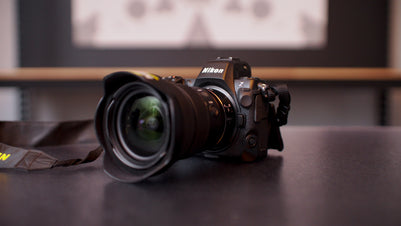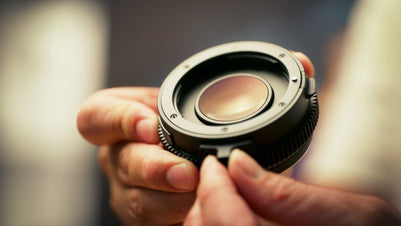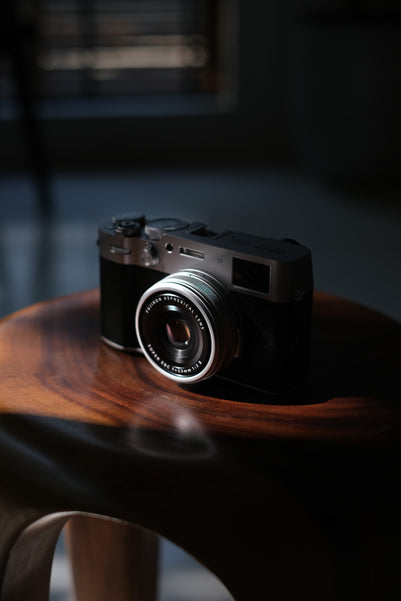
Tamron AF 18-270 DI II VC PZD for Nikon
Tamron AF 18-270 DI II VC PZD for Nikon
The Tamron AF 18-270mm f/3.5-6.3 DI II VC PZD Lens - Nikon B008TSN high-power zoom lens boasts the PZD (Piezo Drive) internal autofocus drive, Tamron’s first standing wave ultrasonic motor system and also VC (Vibration Compensation). With a 62mm filter diameter and weighing in at 450g, this lens is the cumulation of uncompromising research and development to make a lightweight, compact, all-in-one super zoom lens.
The trail-blazing PZD (Piezo Drive) delivers smooth, quick autofocus. Combined with VC (Vibration Compensation), this is a winning partnership delivering clear, stable shots even in low light or at the telephoto end. The overall lens size is reduced, easing your ability to capture clean, clear images of high resolution.
At the telephoto end, the 18-270mm is ideal for sports shots or when using distance to capture wildlife in habitat or natural expressions on subjects who normally be overly conscious of the camera. Whether on vacation or in your backyard, the wide end gives you the tools to shoot expansive landscapes. Every angle for photographic expression and all in a lens that delivers sharp, clear photos.
Features:
28.8-432mm (35mm Equivalent)
Aperture Range: f/3.5 to f/40
Three Low Dispersion Elements
Three Aspherical Elements
BBAR and Fluorine Coatings
PZD Autofocus Motor
VC Image Stabilization
Rounded 7-Blade Diaphragm
Vibration Compensation
If you’re shooting handheld when light is low, especially with longer lenses, your camera’s shutter speeds can become too slow and the image may turn out blurred due to camera shake. Tamron’s VC tracks this shake and neutralises it for sharper images without the inconvenience of a tripod or the artificial look of a flash.
The VC mechanism uses a proprietary actuator and algorithms to deliver an extremely stable viewfinder image with excellent tracking. The tri-axial system uses three driving coils to move internal optical components within the VC lens electromagnetically, based on signals originating from three ball bearings, made from either steel or ceramic. The VC lens elements are held in place only by contact with the balls, achieving smooth movement with minimal friction.
PZD - Piezo Drive
Smaller, lighter, faster and highly accurate AF.
The PZD piezoelectric drive is an internal standing wave ultrasonic motor system. Innovations to reduce parts and simplify operation also contributed to the lens's reduced size and weight. Lighter and smaller than other autofocus drives, the piezoelectric drive uses a standing wave to turn and extend the piezoelectric element instead of the traditional travelling wave. Thus the entire element moves in a standing wave pattern, moving the metal tip (the contact surface) in an elliptic motion. The friction of this movement moves the rotor for smooth, precise autofocus.
Standing wave ultrasonic motors like the one used in Tamron’s innovative PZD have several advantages. They’re smaller and lighter and also provide faster and quieter operation than DC motors for improved AF performance. Compared with their predecessors, their actuator system allows far greater flexibility in lens design, reducing the overall size and weight of the lens.
The minimum focus distance of 49cm over the zoom range, with the macro capability to 1:3.8
Designed exclusively for APS-C sized digital SLR cameras, this all-in-one zoom covers every angle. Its minimum focusing distance of 0.49m (19.3 in.) through the entire zoom range and macro capability to 1:3.8 allows you to enjoy serious, high-quality macro photography with astonishing convenience.
Optical Design
Low Dispersion
Sharpens edges by reducing ‘colour fringing’.
Chromatic aberration occurs when a lens element refracts different wavelengths of a ray of light – its rainbow colours – at very slightly different angles. This results in the ‘colour fringing’ that reduces the sharpness of an image.
LD elements are made from special glass materials with extremely low dispersion indices (i.e. the refraction of a ray of light into rainbow colours is extremely narrow). Thus they effectively compensate for chromatic aberration at the centre of the field (on-axis), a particular problem at long focal lengths (the telephoto end of the zoom range), and for lateral chromatic aberration (toward the edges of the field) that often occurs at short (wide-angle) focal lengths.
Although costly, LD glass materials result in clear, vivid image quality.
Anomalous Dispersion
Controls the dispersion of specific wavelengths of light.
AD glass is a special type of optical glass that is used to achieve more precise control of chromatic aberrations, thereby enhancing overall imaging performance.
A glass of this type provides an abnormally large partial dispersion ratio (amount of diffraction) for the light of specific wavelength ranges (colours) within the visible spectrum. Combining AD glass with these special characteristics with elements made of normal glass has different dispersion characteristics makes it possible to control the dispersion factors of a specific wavelength.
This enhanced level of control results in much lower levels of on-axis (central) chromatic aberration for telephoto lenses (or zooms used at telephoto settings) and a significant reduction of lateral (peripheral) chromatic aberration for wide-angle lenses (or zooms used at wide-angle settings).
Like LD glass, the AD glass material is costly but provides clear vivid image quality.
Aspherical
Far superior image quality – while reducing lens size and weight.
Tamron uses several hybrid aspherical lens elements in its lenses bearing the Aspherical designation. The benefits are two-fold:
first, their non-spherical shapes virtually eliminate spherical aberration and image distortion. Second, as one hybrid aspherical lens element can take the place of multiple elements without compromising performance, they allow the lens to be much more compact.
As a result, these innovative optics have played a crucial role in delivering uniformly high image quality across all apertures and focal lengths of extraordinarily compact ultra-zoom lenses.
Broad-Band Anti-Reflective coating
Cleaner, crisper images without flare or ghosting.
BBAR (Broad-Band Anti-Reflection) coatings reduce the lens reflection and dispersion that cause ghosting and flare. The coatings enhance light transmission in both the short and long wavelength ranges, ensuring excellent performance in all photographic conditions.
Additionally, internal surface coatings are applied to cemented surfaces of all lens elements to deliver sharp, high-contrast images and flawless colour reproduction.
Fluorine Coating for protection and safe cleaning
The front surface of the lens element is coated with a protective Fluorine Coating that is water- and oil-repellant. The lens surface is easier to wipe clean and is less vulnerable to the damaging effects of dirt, dust, moisture and fingerprints.
Request a Price Match
Fill out the price match form below, and we will be in touch shortly.
Product Overview
Tamron AF 18-270 DI II VC PZD for Nikon
The Tamron AF 18-270mm f/3.5-6.3 DI II VC PZD Lens - Nikon B008TSN high-power zoom lens boasts the PZD (Piezo Drive) internal autofocus drive, Tamron’s first standing wave ultrasonic motor system and also VC (Vibration Compensation). With a 62mm filter diameter and weighing in at 450g, this lens is the cumulation of uncompromising research and development to make a lightweight, compact, all-in-one super zoom lens.

Need advice?
Speak to one of our dedicated Australian-based sales team members.


























